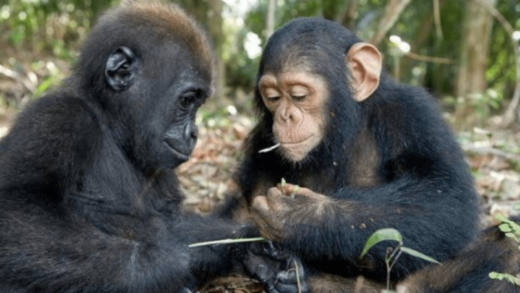Gorillas vs. Chimpanzees: Key Differences
Understanding the distinctions between gorillas and chimpanzees can provide fascinating insights into the animal kingdom and our own human evolution. Despite both being primates and sharing a common ancestor, these magnificent creatures have developed unique characteristics that set them apart. Let’s explore the key differences between gorillas and chimpanzees.
Physical Characteristics
Gorillas and chimpanzees differ significantly in size and appearance. Gorillas are the largest living primates, with adult males reaching up to 6 feet tall and weighing over 400 pounds. They have a robust build, broad chests, and a distinctive brow ridge. In contrast, chimpanzees are much smaller and leaner, typically standing around 3 to 4 feet tall and weighing between 70 to 130 pounds. Their faces are more expressive, with prominent noses and expressive eyes, allowing for greater range in communication through facial expressions. These physical traits not only influence their survival in the wild but also affect their social behaviors.
Behavior and Social Structure
The social structures of gorillas and chimpanzees reveal profound differences in their behavior. Gorillas tend to live in stable, cohesive groups led by a dominant male known as a “silverback.” This leader is responsible for the protection and welfare of the entire troop, which usually includes several females and their young. On the other hand, chimpanzees have a more fluid social hierarchy. Their communities can fluctuate in size and composition, often comprising several males vying for dominance. Chimpanzees are also known for their complex social interactions, including play, grooming, and even forming alliances, showcasing a level of social intelligence that is quite remarkable.
Diet and Foraging Habits
When it comes to diet, gorillas and chimpanzees have differing preferences and foraging strategies. Gorillas are primarily herbivores, consuming a diet rich in leaves, stems, and fruits. Their digestive systems are adapted to break down tough plant material, allowing them to thrive on a vegetarian diet. Chimpanzees, however, are omnivorous and enjoy a more varied diet that includes fruits, leaves, seeds, and occasionally small animals. This dietary flexibility contributes to their adaptability in diverse habitats. Their foraging habits also differ, with chimpanzees often using tools to obtain food, such as sticks to extract termites from mounds, showcasing a level of ingenuity that emphasizes their intelligence.
In Conclusion
Gorillas and chimpanzees are two incredible species with distinct differences that highlight the diversity of the primate family. By understanding their unique characteristics, we gain a deeper appreciation for these animals and their roles in our ecosystem. If you’re interested in learning more about gorillas, chimpanzees, or the broader world of primates, consider visiting your local zoo or wildlife sanctuary, where you can observe their amazing behaviors up close.

